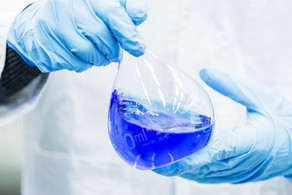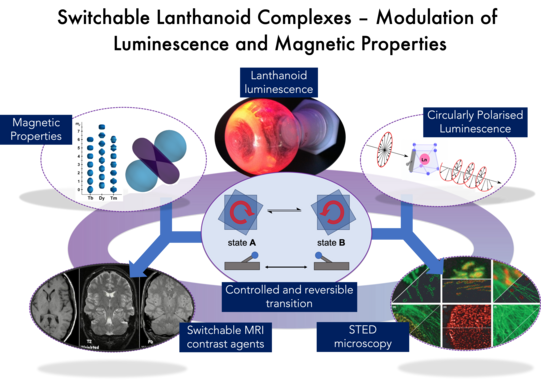Research
As a consequence of their unique electronic structure the lanthanoids have a number of fascinating photophysical and magnetic properties. They make them of enormous importance for various high-tech applications, for example in our smartphones and even in our bodies, when we are receiving a gadolinium-based contrast agent for MRI.
Especially in the biomedical context lanthanoids are usually employed as complexes, where the ligand can add additional functionalities to the overall compound, for example to reduce toxicity or to covalently attach the compound to certain biomolecules. In some cases the ligand will also influence the lanthanoid-centered properties, such as the magnetic properties or the circularly polarised luminescence of the lanthanoid.
We are developing new ligands for lanthanoids where an external stimulus can be used to trigger a controlled and reversible deformation of the ligand scaffold, which then results in a change of the lanthanoid-centered properties. This adds another layer of control over these properties and opens up possibilities for intrinsically new functionalities, such as the development of smart contrast agents for MRI or lanthanide-based dyes for STED-microscopy.
Are you interested in designing and synthesising new lanthanoid coordination compounds? Do you want to learn about luminescence, circularly polarised luminescence and paramagnetic NMR spectra? Projects in our group combine organic synthesis with the analysis of the physical properties of the lanthanoids (in varying degrees). If that sounds like something you want to be working on in your practical course, your Bachelor or Master thesis or your PhD please contact Dr. Kreidt (mailto: elisabeth.kreidttu-dortmundde).






